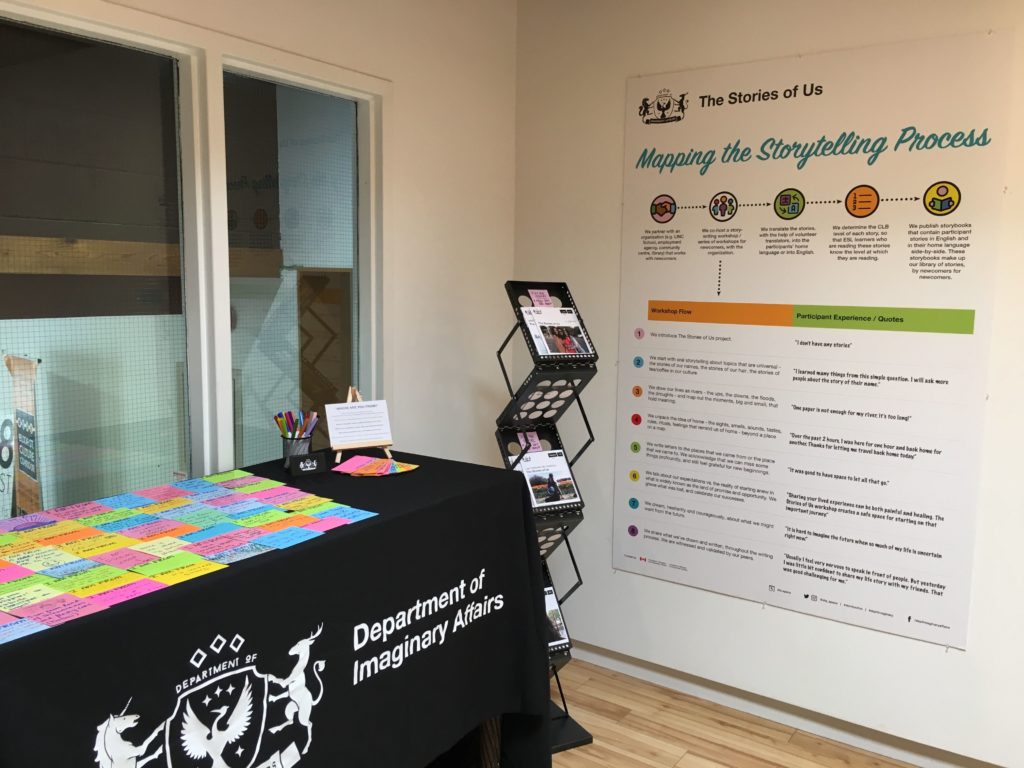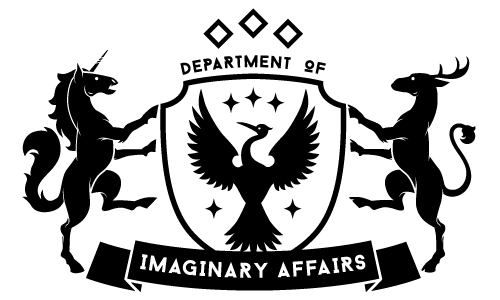 A year ago today, I started as Program Manager of The Stories of Us program at the DIA. Naturally, hitting the one-year mark prompts some reflection, particularly on how the past few months have shaped up. Whereas the fall and winter months were workshop-heavy – trying out different workshop structures to see which ones stuck, experimenting with different story-writing prompts, and ultimately gathering the stories that would populate our ESL library – the spring and summer have felt like a liminal space.
A year ago today, I started as Program Manager of The Stories of Us program at the DIA. Naturally, hitting the one-year mark prompts some reflection, particularly on how the past few months have shaped up. Whereas the fall and winter months were workshop-heavy – trying out different workshop structures to see which ones stuck, experimenting with different story-writing prompts, and ultimately gathering the stories that would populate our ESL library – the spring and summer have felt like a liminal space.
An in-between state between where we’ve been and what’s next.
A space for reflection.
An opportunity to pause for long enough to connect our day-to-day work back to our grander vision.
A moment to entertain the existential crises that inevitably accompany most impact-driven work.
This wasn’t a period that we planned for, but rather one that organically emerged. It turns out there’s a natural moment of contraction after the chaos of the end of the fiscal year in March / April. It’s followed by a longer lull in the summer as schools (AKA publicly funded daycare) close and quite a few programs pause for a few months as many newcomers resume their parental duties full-time. And if you’re a government-funded program like we are, things also slow down in the few months preceding an election. Suffice to say, period of pause.
During this period, we’ve been able to engage in activities that we often don’t have the time to explore when we’re knee-deep in program delivery:
- Now that we have a collection of 40+ books uploaded to our online library, we’ve been thinking more intentionally about how we ensure they are used for their intended purpose – as ESL resources for newcomers and as glimpses into the newcomer experience for the broader public. We’ve applied to present at conferences for practitioners who work with newcomers (e.g. ESL teachers, settlement workers, etc.). Some of these applications have been successful and others not. We’ve conducted interviews with ESL teachers to better understand their realities in the classroom so that we can design our storybooks and any complementary resources with an awareness of that context. The hope is that the easier we make it for teachers to use SoU resources in their classrooms, the more they’ll get used. We’ve applied to exhibit The Stories of Us storybooks at various festivals, including the HAPPENING Multicultural Festival and the DesignTO Festival. We want these stories to be heard beyond the ESL and settlement sectors and permeate the broader cultural fabric of the cities we inhabit. We’re reaching out to libraries and other community spaces across the province about hosting SoU displays in their spaces, so that community members in different cities have the opportunity to learn about our free online library of newcomer stories. Finally, we’ll also be sharing snippets of stories on our social media channels in the months to come!
- This period has also held up a mirror to our limited capacity as three people working various levels of part-time to manage a non-profit while juggling other, sometimes full-time, jobs. There’s a combined conviction and frustration that comes with knowing that we have the collective skills and networks to realize our mission in bigger, bolder ways AND being humbled by the constraints of time and money. This, among other factors, drove us to submit our biggest funding proposal yet this spring. With Jenn leading its development, it proposed a 5-year plan in which the three of us would be employed full-time, working toward establishing a design hub that would allow us to take on several projects like The Stories of Us, each in partnership with a settlement-relevant/adjacent organization. It would allow us to leverage our role as a connector in the settlement space, and sustainably build capacity for design thinking in the settlement sector. In short, it would give us enough time, money, structure, and flow to do what we do best. Unfortunately, we didn’t get the grant. Mourning what could’ve been has also been a part of our process this summer. Taking the time to grieve this setback – a significant one given the time and energy invested into the proposal – has made it easier to see the silver lining. It was an exercise in letting ourselves imagine the ideal, in looking beyond the project cycle and reorienting our compass toward our true north.
- Looking at our internal capacity also evoked a deep sense of gratitude for the many volunteers who make what we do possible. These are the people who generously make themselves available to translate and verify stories, and support us in workshops and events. In order to recognize their contributions in a more public way, we’ll be sharing volunteer features in the months to come as well!
- Last but not least, taking stock of what is possible within our budget has pushed us to think more creatively about how we deliver workshops and collect stories. This fall, we’re experimenting with training practitioners located outside of Toronto remotely so that they can deliver the SoU workshops to the newcomer youth they serve through their programs in Ottawa. Additionally, given that writing one’s story can take several workshops and multiple days, we’re working with English Conversation Circle facilitators in Barrie to coach their participants in telling their stories orally, which will then be recorded and transcribed into storybooks. Stay tuned to hear how these iterations of SoU go!
It’s funny to think that a year ago today, the fact that this whole program was an experiment felt like the most anxiety-inducing part of my job. Today, it’s the part I appreciate the most.
Until next time,
Mathura
